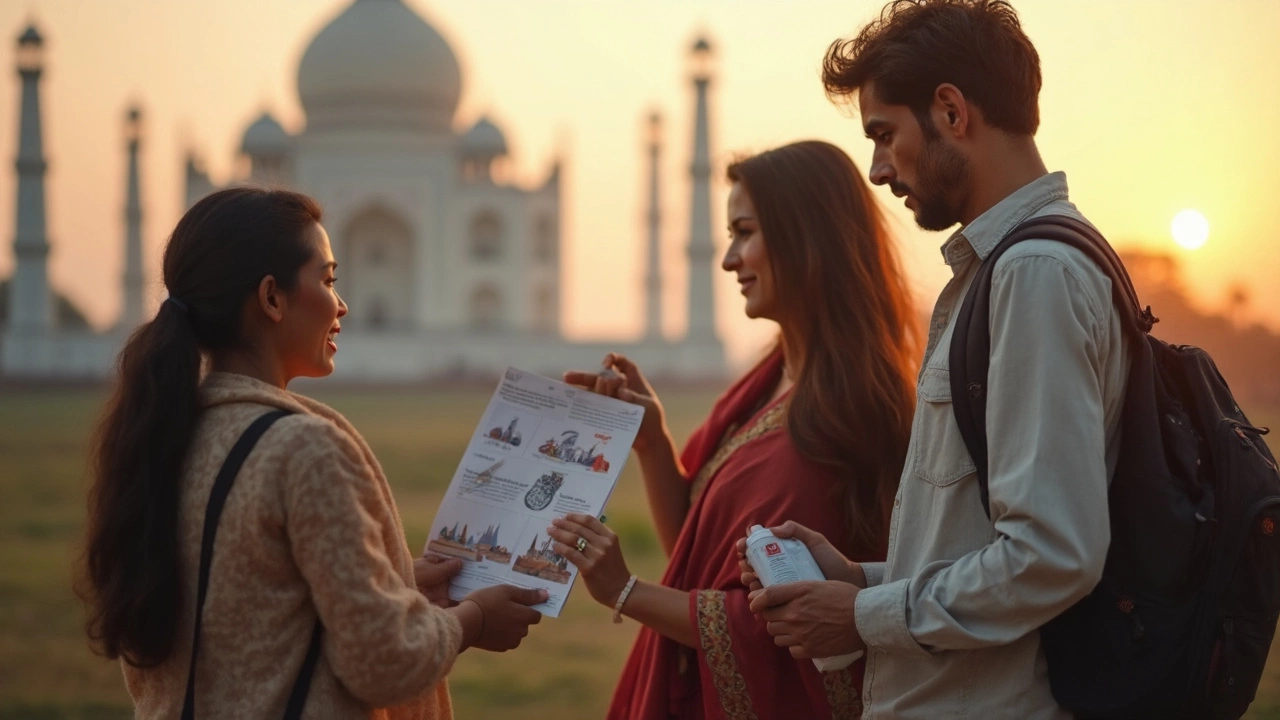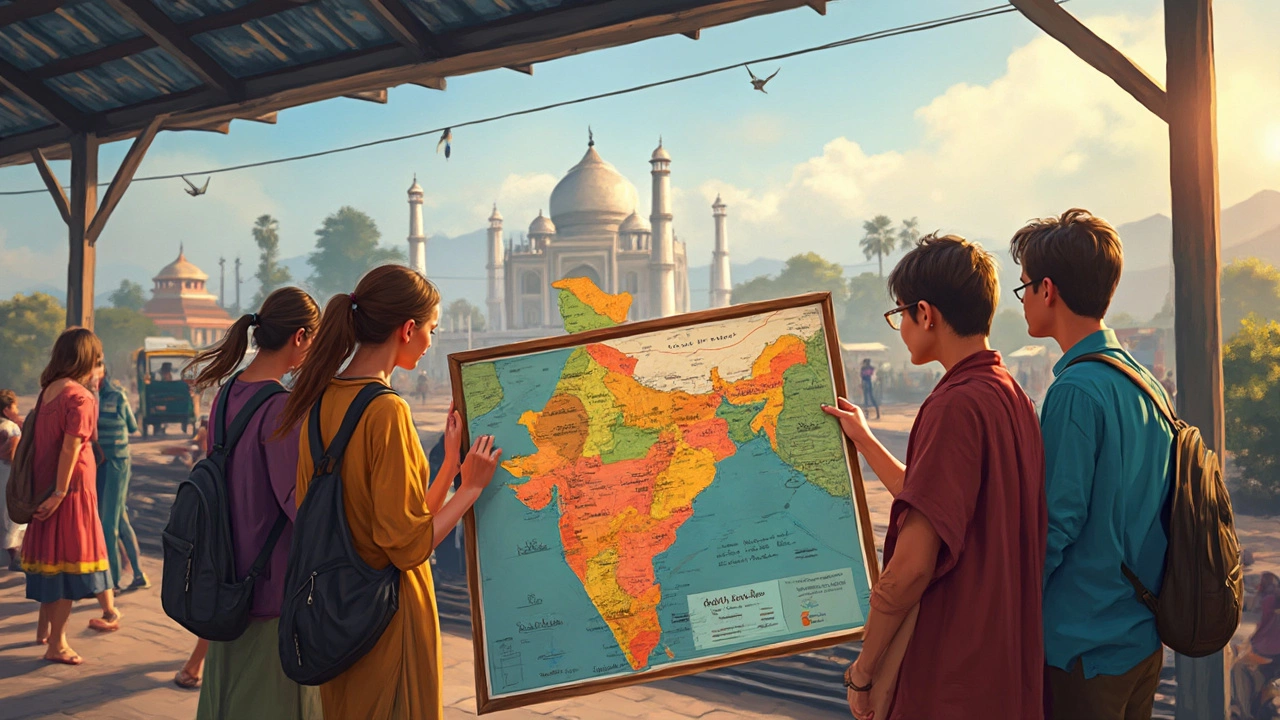If you’re packing for North India and wondering, “Do I need malaria pills?”—you’re not alone. So many travelers get mixed messages on this. Walk into a pharmacy, and you’ll probably get a different story from what you read on trip forums or hear from your doctor back home. The real info is all about knowing where you’re actually going and what you’ll be doing.
Malaria isn’t spread everywhere in India the same way. Places like Rajasthan, Delhi, Agra, and the hill stations up north don’t have the heavy malaria risk you might expect. Sure, big cities have mosquitoes, but the actual number of malaria cases is lower than in places like eastern India or rural forests. That takes a lot of people by surprise.
It’s less about scary headlines and more about being smart. Sleeping with a fan, using insect repellent, and picking a hotel with proper screening can do just as much—sometimes more—than popping pills with side effects. Ask any smart traveler who’s just done the Golden Triangle circuit and they’ll tell you: taking the right precautions works.
- Malaria in North India: What’s The Actual Risk?
- Should You Take Malaria Pills? The Real Advice
- Practical Ways to Prevent Mosquito Bites
- What Travelers Really Do (And What Doctors Say)
Malaria in North India: What’s The Actual Risk?
Let’s clear up the confusion: North India isn’t one giant malaria hotspot. When you look at places like Delhi, Agra, or the main cities in Rajasthan, actual malaria cases are surprisingly rare. The Indian government tracks malaria, and the numbers for these tourist-heavy spots are way lower than for states like Odisha or West Bengal. Even in the muggy summer season, it’s not the malaria war zone some folks imagine.
The risk changes a lot by region. In the northern states—think Himachal Pradesh, Uttarakhand, Punjab, Haryana, Uttar Pradesh, Rajasthan, and Delhi—the odds of catching malaria are much lower than in the deep forests or along the eastern coast. Major tourist towns are pretty aggressive about spraying for mosquitoes and controlling standing water. The result? Most tourists never even meet someone who’s actually had malaria in these areas.
Now, if you plan to spend weeks camping by swamps during monsoon or working in tiny, remote villages, that’s a different story. But if your itinerary covers spots like the Golden Triangle (Delhi, Agra, Jaipur), the big Himalayan towns, or Varanasi, the malaria pills India debate is less urgent. Doctors often say that routine mosquito prevention in these places is usually enough.
So, what does this mean for you? It’s all about where you’re headed and how you travel. City hotels and hill resorts have much fewer mosquitoes than hot, flat, rural zones. Government websites, like the Indian National Vector Borne Disease Control Programme, show that most malaria outbreaks still happen in forested, poorer regions far from tourist trails.
Bottom line: North India isn’t malaria-free, but the day-to-day risk for most travelers sticking to the main sights is pretty low. Knowing what’s real can save you from overpacking prescriptions or stressing about every mosquito bite you get in your hotel room in Jaipur.
Should You Take Malaria Pills? The Real Advice
The debate about malaria pills for travel in India keeps coming up, but most people don’t realize there isn’t one simple answer for everyone. Here’s what health experts say: if you’re going to popular North Indian spots like Delhi, Agra, Jaipur, or even up to Himachal Pradesh or Uttarakhand, the risk of getting malaria is really low. The Indian government and the World Health Organization both agree that these areas have only sporadic or seasonal malaria cases, not constant outbreaks.
That said, if you’re planning an offbeat trip—think camping in remote forests, trekking way out in the wilds near the Nepal border, or working in village clinics—then you’re in a different category. The same goes for monsoon season, when mosquitoes are out in full force. Most doctors will check your exact itinerary before recommending malaria pills. It’s not a blanket rule for all travelers.
Common malaria pills like doxycycline, atovaquone-proguanil, or mefloquine can come with side effects, including stomach problems or weird dreams, and you usually have to start them before you even land in India. That’s why most seasoned travelers and even doctors won’t push pills just for a quick Golden Triangle trip or regular city travel. For short, basic visits, they usually say skip the meds—just double up on repellent and sleep protection.
Here’s what works for most North India trips:
- Check the latest malaria India travel health advisories for your exact route
- If your trip sticks to cities and well-trodden circuits, focus on prevention, not medication
- If you’re heading far off the map, especially right after rains, talk to your doctor and consider pills
- Listen to your body—if you get fever or chills during or after your trip, see a doctor fast
For what it’s worth, when Layla and I visited Rajasthan and the Punjab last spring, we packed strong DEET spray and booked hotels with AC or screens. No pills, no drama, just a good backup plan. Always check in with your own doctor based on your health and history—they might spot something you missed.

Practical Ways to Prevent Mosquito Bites
Worried about getting bitten? You don’t have to let a few bugs ruin your trip, even if you’re dodging mosquitoes in North India. Prevention is way more than just slapping on some repellent and hoping for the best. Here’s how to make it much tougher for mosquitoes to find you interesting in the first place.
- Malaria pills India aren’t the only thing you need to think about—start with basic habits. Cover up with long sleeves and pants, especially in the early morning and late evening when mosquitoes are laziest but biting.
- Use a repellent with at least 20% DEET, picaridin, or IR3535. Mosquitoes in India are stubborn, and anything less is often a waste of money.
- Stay in places with screened windows, or better yet, sleep under a mosquito net. It’s old-school, but it works. Many hotels in North India will provide one if you just ask.
- Turn on the fan or AC in your room. Mosquitoes are wimps when it comes to moving air—they hate it.
- Avoid standing water, even tiny puddles around your guesthouse: that’s where mosquitoes breed. If you see them, mention it to staff or avoid that section.
- Spray your hotel room with a pyrethroid-based spray before going out in the evening. It keeps the little bloodsuckers away when you come back.
If you want a quick cheat sheet, here’s what works best according to the CDC and studies from India:
| Prevention Tool | Effectiveness (%) |
|---|---|
| DEET-based Repellents | 95% |
| Mosquito Nets | 90% |
| Air Conditioning/Fans | 80% |
| Wearing Long Clothes | 75% |
Most travelers who stick to good habits barely see any bites. Layla and I noticed that the nights we used both a net and a ceiling fan, we didn’t get bitten at all. If you’re out late or staying near water, double up on the repellent and be extra careful. With a little planning, you can almost forget mosquitoes exist—and actually enjoy your trip.
What Travelers Really Do (And What Doctors Say)
Most folks I’ve met who travel around north India skip the malaria pills—but not because they’re ignoring the risk. They do their homework, ask doctors, and weigh the pros and cons. Countless travelers on forums like Lonely Planet and IndiaMike will say their doctors didn’t push the pills if their itinerary was mainly in Delhi, Agra, or Jaipur, where malaria is much less common than in coastal or jungle regions.
Doctors usually check two things: where you’re headed and how you’ll be living. If you stick to big cities, tourist hotels, and only venture outside during cooler hours, most pros say you don’t need to add antimalarials to your packing list. But if you’re hitting rural or forest areas after a monsoon, that’s when the risk goes up and they might recommend them.
- If you’re only in malaria pills India hotspots—like certain rural zones or during the wet season—pills make sense. Otherwise, bite prevention rules (mosquito nets, repellent, covered clothes) are usually enough.
- A CDC travel health report from 2024 showed under 3% of malaria cases were reported from north Indian states like Rajasthan, Punjab, and Himachal, and most cases came from isolated rural spots.
- Layla and I asked two doctors before our Rajasthan trip last year. Both said no to routine malaria meds, but reminded us not to mess around with mosquito repellent.
Here’s some solid data for the number geeks:
| North India Region | Malaria Cases (2024) | Percentage of National Cases |
|---|---|---|
| Delhi | 172 | 0.04% |
| Rajasthan | 660 | 0.17% |
| Uttar Pradesh | 1,210 | 0.31% |
So, most travelers just double down on good prevention instead of taking pills. But bottom line? Always check with your own doctor before you go. The rules can shift if you have other health issues or end up heading somewhere wild on a side trip. Either way, knowing the real north India stats and the actual risk helps you make a call based on facts, not just travel rumors.
